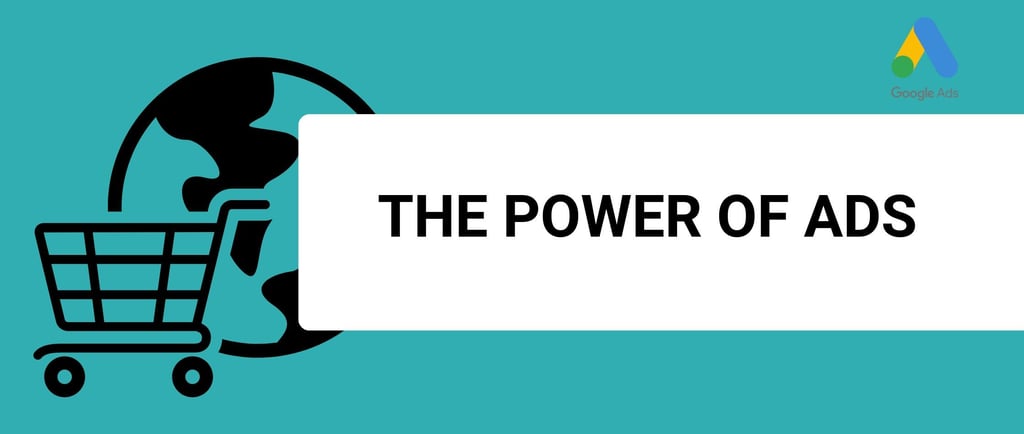Google Ads for E-commerce: Drive Sales and Boost Conversions
Unlock the full potential of Google Ads for e-commerce in 2024. Learn advanced strategies to boost sales and conversions with Shopping, Search, Performance Max, and more.
CAMPAIGN OPTIMIZATION
9/29/20245 min read


In today’s competitive e-commerce landscape, standing out and driving targeted traffic to your store requires a powerful strategy. Google Ads for e-commerce is one of the most effective tools for reaching potential customers, driving conversions, and scaling your online business. With the right combination of Shopping, Search, and advanced campaigns like Performance Max, you can dramatically boost your return on investment (ROI). Let’s explore the best practices for structuring and optimizing your Google Ads for e-commerce success in 2024.
Why Google Ads for E-commerce is Essential for Your Business
Google Ads for e-commerce gives businesses direct access to a highly relevant audience. Whether through Shopping Ads, Display Ads, or Performance Max, you can reach customers who are actively searching for products like yours.
With the increased competition in 2024, it's more important than ever to use Google Ads for e-commerce effectively. Not only can you boost visibility, but you can also drive conversions at every stage of the buying journey.
Google Ads Account Structure for E-commerce Success
A well-structured Google Ads account is crucial for e-commerce success. Your account should be divided into two key types of campaigns: Always-on campaigns and Sales/Promotional campaigns. Always-on campaigns include Shopping, Search, and Performance Max campaigns, which run consistently to build brand awareness and capture valuable data.
Sales/Promotional campaigns, such as Display and YouTube Ads, can be ramped up during key periods like holidays or product launches.
Starting Strong: Why Shopping and Search Campaigns Are Best for E-commerce Beginners
When beginning with Google Ads for e-commerce, the best starting point is a combination of Shopping and Search campaigns. Shopping Ads appear directly in search results with images, prices, and product descriptions, making them ideal for capturing high-intent shoppers. These ads ensure your products are visible when customers are actively searching to buy.
Search campaigns complement Shopping Ads by allowing you to target specific, highly relevant keywords. Running both Non-Brand and Brand & Competitor campaigns ensures maximum visibility for a variety of search terms. This combination of Shopping and Search is the foundation of a successful Google Ads strategy, particularly in the early stages.
Performance Max Campaigns: How to Use Them Effectively After Gathering Data
Performance Max campaigns are an excellent addition to your Google Ads for e-commerce strategy, but they work best once your account has accumulated sufficient data. Performance Max allows Google to leverage its machine learning algorithms to optimize your ads across all available channels, including Search, Display, and YouTube.
However, it’s crucial not to rush into Performance Max. First, gather insights from your Shopping and Search campaigns, as this data provides a solid foundation for the machine learning algorithms to make more accurate decisions and improve performance. The later we introduce this campaign type to our Google Ads account, the better results it tends to deliver, as the data-driven approach allows for smarter optimizations.
In 2024, taking full advantage of Performance Max goes beyond the basics. Advanced segmentation, using first-party data such as purchase history and customer behavior, is essential for creating more dynamic and precise campaigns. By feeding the AI with this specific data, you can tailor your campaigns more effectively, outperform competitors, and achieve better results than relying on default setups.
How Google Display Ads Fit Into an E-commerce Strategy
Display Ads are highly effective when paired with data-driven insights and are best used during promotional periods or product launches. While Display Ads allow you to reach a broader audience across the web, they perform best when informed by data from existing campaigns. During sales or other key promotional periods, increasing your Display Ad budgets can drive more leads and conversions.
Creativity plays a huge role in Display Ad success. Although AI helps with optimization, it's still essential to combine automated strategies with human-driven creativity to stand out. Your visuals need to be compelling, and your messaging should create urgency, especially during time-sensitive promotions.
YouTube Ads for E-commerce: When and How to Use Them
YouTube Ads are another powerful tool for Google Ads for e-commerce, particularly for showcasing product videos or building brand awareness. Videos are one of the most engaging forms of content, making YouTube a perfect platform for e-commerce. By promoting product demonstrations, customer reviews, or unboxing videos, you can significantly boost traffic and sales.
Like Display Ads, YouTube Ads should be launched after gathering data from other campaigns. YouTube works best when your business already has an idea of which products or categories perform well, allowing for more targeted video advertising. Increasing your ad spend during promotional periods can create urgency and drive immediate action.
Broad Match and Smart Bidding: Incremental Revenue Boost
A newer strategy gaining traction in Google Ads for e-commerce is the use of broad match keywords combined with Smart Bidding. This tactic allows you to capture a wider range of searches without needing to manually update keyword lists constantly.
With broad match keywords, Google’s AI determines the best opportunities to display your ads, and Smart Bidding automatically optimizes for conversions and ROI. This strategy is particularly useful for increasing incremental revenue and is easy to implement once your Shopping and Search campaigns have established solid data.
Unlike other keyword match types, Broad Match takes into account the content of the landing page, the user's previous searches, location, and overall context.
Data Input Optimization: A Key to Success
Optimizing your product feed is critical for successful Shopping Ads. This includes refining essential product attributes such as titles, images, prices, and product descriptions.
An optimized product feed ensures that your Product Listing Ads (PLAs) are as relevant as possible, increasing visibility in search results and improving click-through rates (CTR). Businesses that neglect this step often miss out on valuable opportunities.
Furthermore, integrating first-party data into your Google Ads account provides even more power to your campaigns. Customer Match allows you to create highly targeted audiences based on purchase history, preferences, and engagement patterns. This data becomes increasingly important as traditional cookie-based tracking diminishes.
Building a Data-Driven Always-On Strategy for Long-Term Success
An always-on strategy is vital for any long-term Google Ads for e-commerce campaign. Search, Shopping, and Performance Max campaigns should be running consistently to gather data, capture conversions, and drive brand visibility. The insights you gain from these always-on campaigns will help you refine your targeting, adjust budgets, and improve your ad performance over time.
Using a dynamic product segmentation model is essential for ongoing optimization. Labeling products as high priority or low priority based on performance data ensures that your best-selling products receive the majority of your ad spend. By consistently optimizing your campaigns based on data input, you’ll maximize your ROI and set your business up for long-term success.
Conclusion: Launch Your Google Ads Campaign for E-commerce Success
If you’re looking to drive sales and grow your e-commerce business, Google Ads for e-commerce offers unmatched opportunities. By starting with Shopping and Search campaigns and leveraging advanced tactics like Performance Max, Display, and YouTube Ads, you can significantly increase your ROI. Remember, creativity, data input optimization, and continuous refinement are the keys to staying ahead of the competition in 2024.
Ready to start using Google Ads for e-commerce to grow your business?
Contact us today to learn how we can help you create a winning Google Ads strategy that drives conversions and boosts your online sales.
CONTACTS
incomewithdigitalmarketing@gmail.com
BOOK WITH US
SERVICES
Google Ads Assisstance
Google Analytics Setup
Google My Business Management
